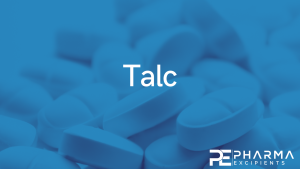Impact of Methods of Preparation on Mechanical Properties, Dissolution Behavior, and Tableting Characteristics of Ibuprofen-Loaded Amorphous Solid Dispersions

This study aims to improve the biopharmaceutical, mechanical, and tableting properties of a poorly soluble drug, ibuprofen (IBP), by preparing amorphous solid dispersion (ASD) followed by a sustained-release tablet formulation. A suitable polymer to develop an ASD system was chosen by utilizing the apparent solubility of IBP in various polymer solutions. ASDs containing various ratios of IBP and selected polymer were prepared by the melt fusion (MF) method. ASD containing optimized drug-polymer ratio prepared by freeze-drying (FD) method was characterized and compared physicochemically. The solubility of IBP in water increased 28-fold and 35-fold when formulated as ASD by MF and FD, respectively. Precise formulations showed amorphization of IBP and increased surface area, improving solubility. The dissolution pattern of optimized ASD-IBP in pH 6.8 phosphate buffer after 60 min in MF and FD was enhanced 3-fold. In addition, direct compression tablets comprising optimized ASD granules from MF and FD were made and assessed using compendial and noncompendial methods. ASD-IBP/MF and ASD-IBP/FD formulations showed a similar drug release profile. In addition, 12 h of sustained IBP release from the ASD-IBP-containing tablets was obtained in a phosphate buffer with a pH of 6.8. From the dissolution kinetics analysis, the Weibull model fitted well. The drug release pattern indicated minimal variations between tablets formed using ASD-IBP prepared by both procedures; however, pre- and postcompression assessment parameters differed. From these findings, the application of ASD and sustained-release polymers in matrix formation might be beneficial in improving the solubility and absorption of poorly soluble drugs such as IBP.
Introduction
Ibuprofen (IBP), a classical nonsteroidal anti-inflammatory drug, is widely used to treat mild to moderate pain and fever. Due to its poor solubility, IBP is categorized as a BCS class-II drug [1, 2] with a pH dependency in the solubility profile [3]. In addition, IBP has a short elimination half-life of approximately 1.8–2 h [4]. Thus, poor solubility and quick elimination half-life limit in its clinical application, and a multiple-dosage regimen is required to maintain optimum plasma drug concentration. Approximately 25–40% of the current drugs and recently developed active pharmaceutical ingredients (APIs) exhibit limited solubility in water [5]. Consequently, it is necessary to administer a substantial dose of the medication to achieve a therapeutically significant plasma concentration of drugs with low solubility. Inadequately soluble drugs administered in substantial amounts have reduced systemic bioavailability and heightened local toxicity at sites of aggregate deposition owing to their elevated concentration [6]. Such problems may be resolved with a formulation technology that increases the solubility of the drug [7]. Several approaches can be employed to enhance the solubility of poorly soluble drugs in water. These include using surfactants, pH adjustment, nanosuspension technology, hydrotrophy, solid dispersion, and salt formation [8]. The solid dispersion (SD) approach is commonly employed to enhance the aqueous solubility, dissolution rate, and consequently, the bioavailability of drugs exhibiting limited solubility, among the previously mentioned methods [9].
Generally, SDs involve the incorporation of the drug into a pharmacologically inert hydrophilic carrier. The physical state of the drugs in SDs can be crystalline or amorphous. When the drug is amorphous, it can be dispersed over the carrier employed at a molecular level or incorporated in the solid dispersion as particles [10, 11]. On the other hand, when the drug is in its crystalline state, it can be solely incorporated as a particle. Theoretically, the drug and the carrier could form mixed crystals [12]. According to various studies, mixed crystals of this kind have never been encountered with SDs. By incorporating the molecular dispersion of one or more APIs in an inert carrier, SD increases the drug’s solubility [13]. The chemical and physical stability of SDs, as well as their solubility, dissolution, bioavailability, and manufacturability, are all critical to the development of pharmaceuticals. [14]. Therefore, the mechanical properties of SDs may impact the compaction properties of the final dosage form formulation and the success of tablet manufacturing. From this perspective, knowledge of the mechanical properties of SDs is crucial for their rapid development into good-quality tablets [15]. Along with evaluations of stability and dissolution performance, mechanical property characterization of SD and its associated formulation blend should ideally be a key component of SD formulation design and optimization. However, very little is known about the SD system’s potential to improve the biopharmaceutical and mechanical behavior of IBP.
Sustained-release (SR) systems have long been used to keep therapeutically effective plasma drug concentrations of the drug with a short biological half-life over a long period [16]. Therefore, SR dosage forms containing SD granules are an appealing formulation strategy for increasing the dissolution rate of poorly soluble drugs having a short biological half-life [17].
The primary objective of this research is to develop IBP-loaded ASD (ASD-IBP) to enhance the physicochemical properties and dissolution behavior of IBP. Furthermore, a sustained-release matrix tablet formulation containing the precised ASD granules was prepared and evaluated physicochemically.
Download the full article as PDF here Impact of Methods of Preparation on Mechanical Properties, Dissolution Behavior, and Tableting Characteristics of Ibuprofen-Loaded Amorphous Solid Dispersions
or read it here
Materials
BASF, Dhaka, Bangladesh, kindly donated working samples of IBP, Soluplus®, Kolliphor® P188, and Kolliphor® P407. Moreover, StarTab® (directly compressible starch) was a generous gift from Colorcon Bangladesh. All other chemicals (Eudragit® RSPO, Kollidon® SR, Aerosil® 200, Talc, magnesium stearate, di-sodium hydrogen phosphate, potassium dihydrogen phosphate, and sodium hydroxide pellets) were purchased commercially and were of pharmaceutical grade. The solvents (methanol, tert-butyl alcohol) used were of analytical grade.
Ajam Uddin, Shimul Halder, Nandita Deb, Harinarayan Das, Madhabi Lata Shuma, Ikramul Hasan, Manik Chandra Shill, Syed Shabbir Haider, Impact of Methods of Preparation on Mechanical Properties, Dissolution Behavior, and Tableting Characteristics of Ibuprofen-Loaded Amorphous Solid Dispersions, Academic Editor: Parasuraman Pavadai, Wiley, Advances in Pharmacological and Pharmaceutical Sciences, Volume 2024, Article ID 2303942, 15 pages, First published: 28 May 2024 https://doi.org/10.1155/2024/2303942
Read also our introduction article on Talc here:


